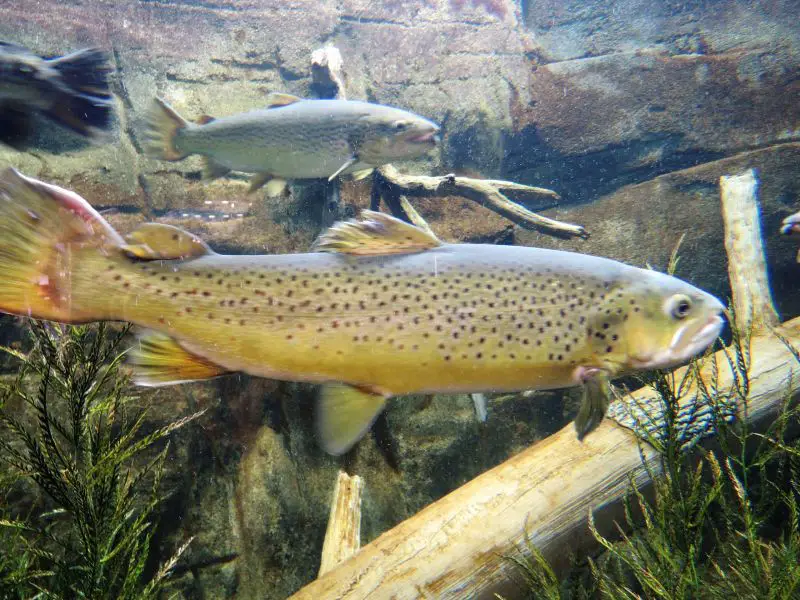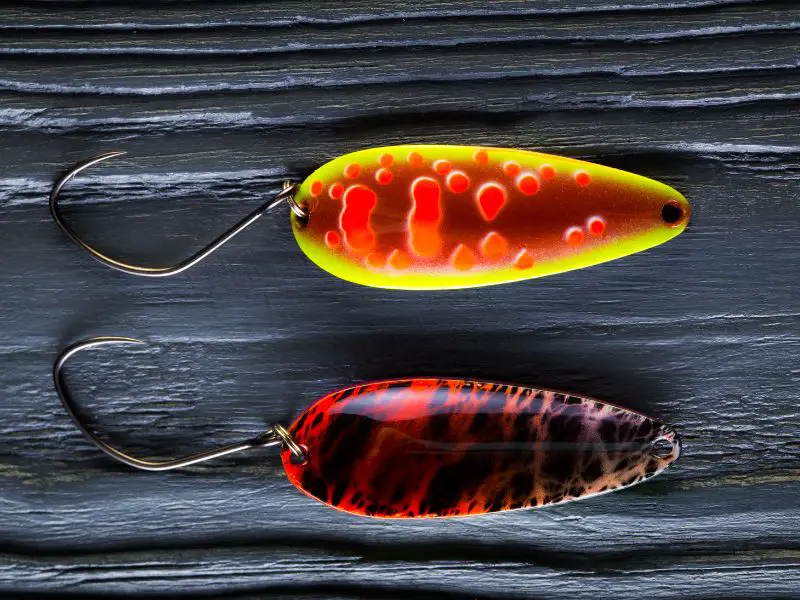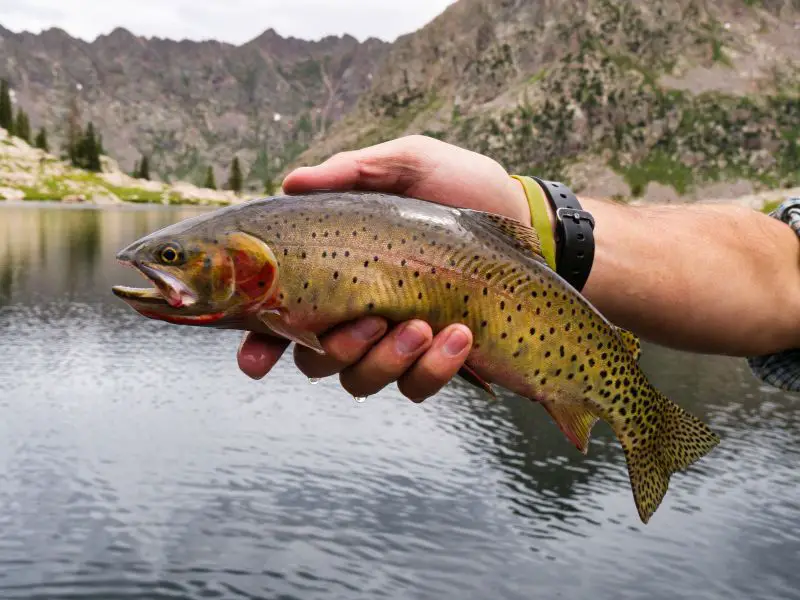When I was fishing for trout last month, it was just after some rain and the water was muddy. I was wondering if trout would still bite, so I did some quick research. Here’s what I found.
You can catch trout in muddy water, but it’s more challenging as muddy water prevents trout from spotting your bait or lure. To improve your chances, use bright or scented baits and lures that can stimulate trout’s other senses. Also, try fishing in shallower areas where trout may seek refuge in murkier conditions.
So, while trout do bite in muddy water, how does this affect them, and what are some ways we can better catch them? Let’s take a closer look.
Do Trout Bite in Muddy Water?

Trout will still bite in muddy water. However, their behavior and feeding patterns may change somewhat due to the reduced visibility. These changes can present a unique set of challenges for us anglers, but hey, that’s why we love fishing, right? It’s all about adapting to the situation.
Trout have an incredible sensory system that they rely on when visibility is low. They have a special line of pressure sensors called the ‘lateral line‘ running along their bodies that can detect the slightest movements in the water. This allows them to locate and hunt prey even when they can’t see clearly.
It’s akin to what master angler John Gierach described in his book “Trout Bum” when he said, “The trout do not rise in the cemetery, so you better do your fishing while you are still able.” That’s the spirit of trout – they don’t stop hunting just because the water’s a bit murky. They adapt and keep feeding.
However, this doesn’t mean that trout fishing in muddy water is the same as fishing in clear water. The decreased visibility means that trout might be a little more cautious, a little slower to bite, and they might stick closer to their usual cover. But don’t worry, we’ll get into that in the next section.
Remember, fishing is an art of patience and persistence. A bit of mud isn’t going to stop us from landing that trophy trout, now is it?
So, in the grand scheme of things, muddy water is not a deal-breaker for trout. They’ll still be biting. The trick lies in adjusting our tactics to suit the conditions. But more on that later.
Where Do Trout Go in Muddy Water?

In muddy water, trout will typically gravitate towards areas that offer them protection and a sense of security. They’ll be on the lookout for spots that can provide them with some cover from above and below. Here are a few key areas to focus on:
- Structure: Look for logs, rocks, boulders, or any other solid structure that offers cover. Trout will often congregate near these formations, using them as both hiding spots and ambush points for unsuspecting prey.
- Bank edges: The edges of a river or stream bank can be a goldmine in muddy water conditions. Trout will often move closer to the bank, where the water is slightly shallower and there’s more cover available. Plus, the banks can sometimes provide a little bit of a visibility advantage due to the contrast between the dark soil and the water.
- Inflow areas: If you come across a spot where a tributary or smaller stream is flowing into the main body of water, you’re in luck. These inflow areas often bring in fresh, oxygenated water and attract a variety of prey. As a result, trout will likely be hanging around these spots, waiting for a tasty morsel to come their way.
- Deep pools: In times of low visibility, trout will sometimes seek out the safety of deeper pools. The deeper water provides them with a better sense of security from predators, and it’s also a place where they can find cooler, more oxygen-rich water during warmer months.
What’s the Best Color to Catch Trout in Muddy Water?

Color plays a crucial role in fishing, especially in low visibility conditions. But before we dive into specifics, let’s remember one important principle: trout, like other fish, don’t see colors the same way we do. Water absorbs light, and the deeper or murkier it gets, the more colors start to fade and blend into a monotonous grey.
Now, there’s a lot of debate among anglers about the best color for lures and flies in muddy water. Over the years, I’ve found that the key is to focus on colors that offer the most contrast against the muddy backdrop. Here are a few top performers:
- Bright, neon colors: Think chartreuse, hot pink, or fluorescent orange. These colors can be seen from quite a distance in muddy water, making them great options for catching a trout’s attention.
- Dark colors: On the flip side, dark colors like black, purple, and dark blue can also work well. These colors provide a strong silhouette against the lighter-colored muddy water, which can help lure in curious trout.
- Flashy, metallic colors: Don’t underestimate the power of a little bit of flash! Metallic silver, gold, or any shiny material can reflect whatever light is available, making your lure more noticeable in the murky depths.
In his book “Reading Trout Water,” Dave Hughes reminds us, “Trout are predators, and they can’t afford to let potential food items pass by without at least a look.” That’s exactly what we’re trying to achieve with these colors – make sure our offering piques the interest of our finned friends.
Don’t be afraid to experiment with different color combinations. Sometimes, the most unlikely combinations can yield amazing results. Remember, we’re trying to stand out in the crowd, so think outside the box.
Now, before you rush off to your tackle box and start digging out the brightest lures and flies you can find, let me remind you of one important thing: presentation is still key. The most attention-grabbing colors won’t do you much good if your lure or fly isn’t presented correctly. So, make sure you’re using the appropriate techniques, such as matching the hatch or mimicking the local prey’s behavior.
In the next section, we’ll explore some tips and tricks to help you catch more trout in these challenging conditions.
5 Tips to Catch Trout in Muddy Water

We’ve looked at whether trout bite in muddy water (they do), where they might be hiding (near structures, banks, inflows, and deep pools), and what colors can attract their attention (bright, dark, and flashy). Now, let’s wrap it up with some handy tips to make your muddy water trout fishing adventure a success.
- Slow down your retrieve: In muddy water, trout have less visibility and hence, less time to decide whether or not to strike your lure. By slowing down your retrieve, you’re giving them more time to make that decision.
- Use larger lures: Larger lures or flies can be more visible in murky conditions. Plus, they create more vibrations in the water, which can attract trout relying on their lateral line to detect prey.
- Fish with scent: This one’s for all the bait and lure anglers out there. In muddy water, trout will rely more on their sense of smell to locate food. Using scented baits or adding scent to your lures can give you an edge.
- Be patient: As I’ve said before, fishing is an art of patience and persistence. This is especially true in muddy water conditions. You may need to spend more time exploring and trying different spots before you find where the trout are hiding.
- Stay safe: Last but certainly not least, always remember safety first. Muddy water often comes with increased water flow and slippery banks, so always take extra care when you’re out there.
These tips, combined with the knowledge we’ve shared earlier, will hopefully see you landing some impressive trout, even when the water is less than clear.
